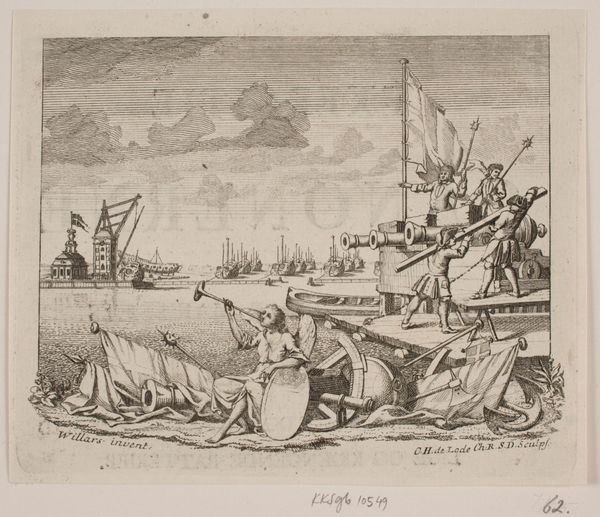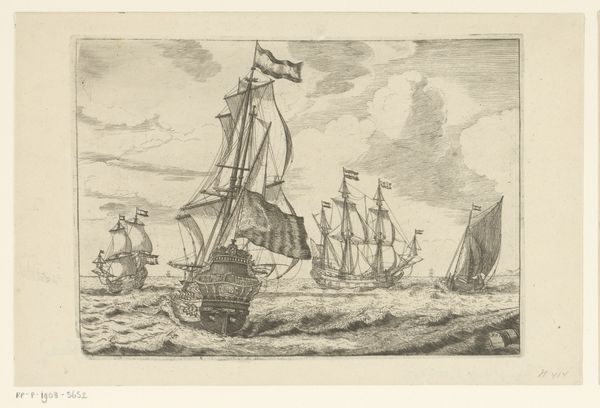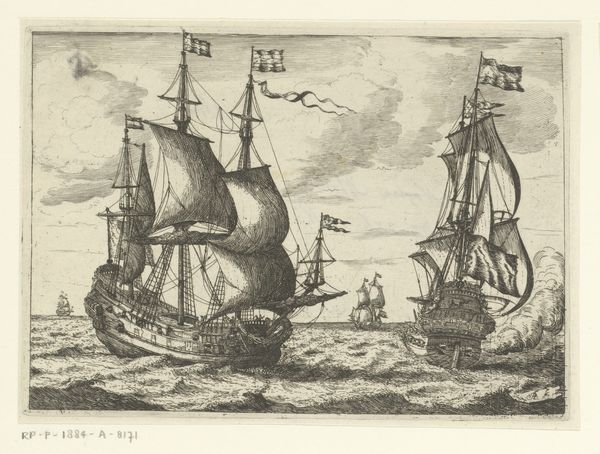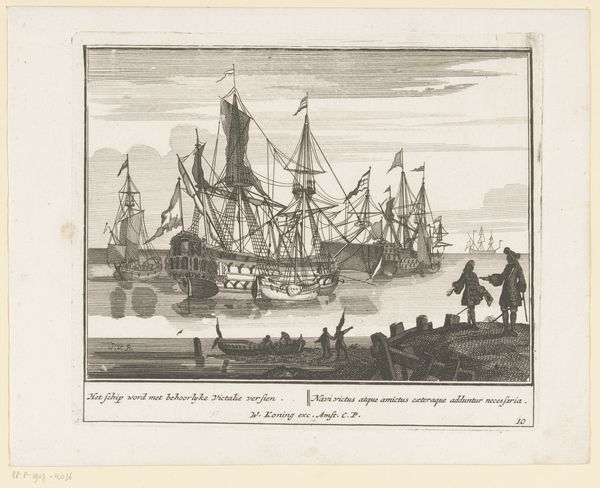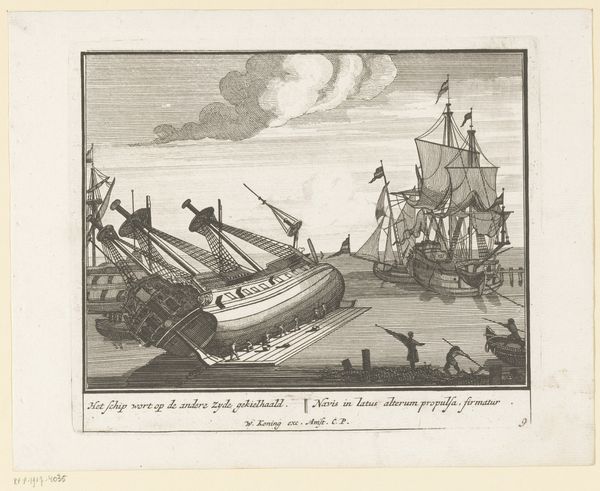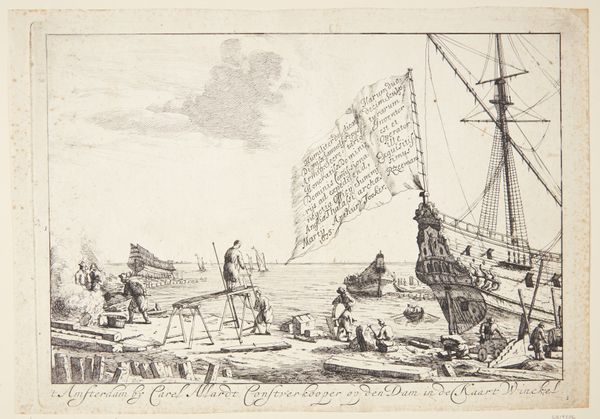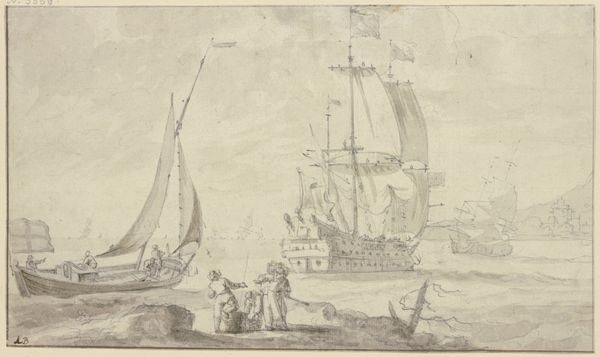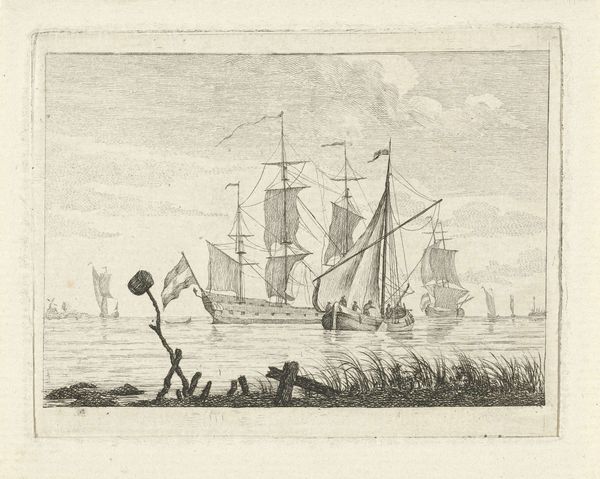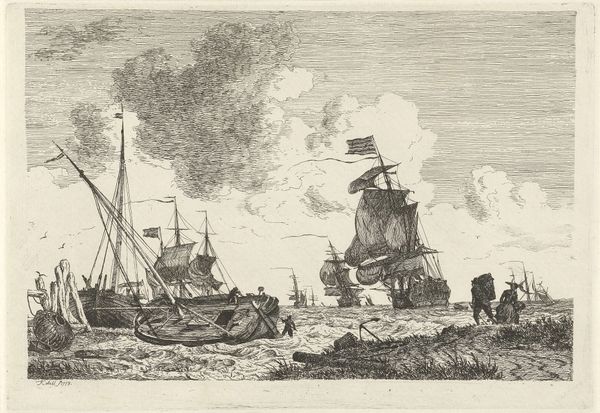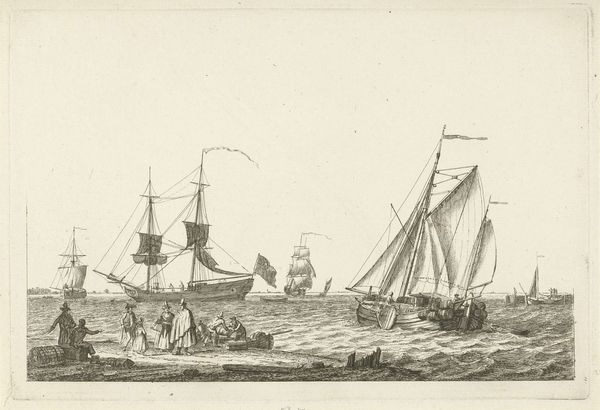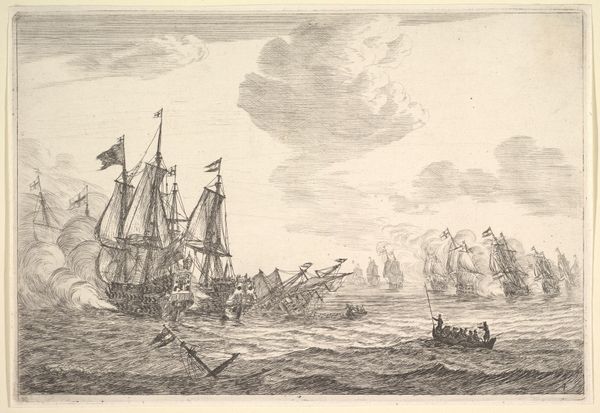
print, etching
#
narrative-art
#
baroque
# print
#
etching
#
landscape
#
history-painting
Dimensions: height 152 mm, width 192 mm
Copyright: Rijks Museum: Open Domain
Editor: Here we have Pieter Pickaert’s etching, “Arrival of King James II in France, 1689.” It's so detailed, especially for a print! There’s a definite somber mood, the sea looks quite rough, and everyone in the boat seems rather preoccupied. What story do you think Pickaert is trying to tell us? Curator: What a marvelous visual tale! If I could step into that etching, I bet I’d smell salt and brine. James, fleeing England after being deposed, a king without a kingdom, tossed about like that little boat in a big sea – powerful imagery! The grey etching emphasizes the feeling of uncertainty of a journey’s beginning and its symbolic representation of new territory on a personal and grand political scale. See how the waves practically leap off the page? It reflects the drama surrounding James's exile. Do you notice how the dark waves crash over the bottom of the image as if encroaching onto the landscape, even though it seems peaceful? Editor: Yes, it's interesting that the Baroque style seems to emphasize drama and emotion, even in a small print like this. How effective do you think prints were in communicating political events to the masses? Curator: Immensely! Before mass media, prints were key, affordable "news flashes" to visually express politics for popular consumption! This reminds me of a tempestuous time; history and artistry beautifully combined. What resonates most with you, now that we’ve delved a little deeper? Editor: The symbolic aspect, definitely – that a small print can carry such historical and emotional weight is something I’ll remember. Thanks for the insights!
Comments
No comments
Be the first to comment and join the conversation on the ultimate creative platform.
